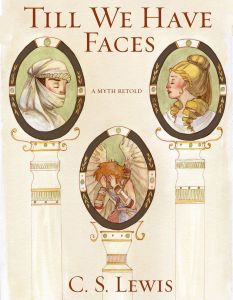Note: Cross-posted from the new blog site, TheImaginativeChristian. Please update your bookmarks to the new site.
 In my “Book of Centuries” reading challenge, I have recently read books from or about the 15th and early 16th centuries — including an interesting work, Sir Thomas More’s Utopia (free e-book here). Thomas More lived in early 16th century England, as a lawyer, judge, statesman, and among King Henry VIII’s advisors; he was also one of the Renaissance humanists and contemporary of Erasmus. The last seven years of his life are wonderfully told in the movie A Man For All Seasons., More is credited with the creation of the word now well-known in the English language: Utopia. He wrote this short work, published in 1517, as part satire on late medieval England, describing his vision of the ideal world, an island called Utopia. This book – following in an ancient tradition of describing an ideal world, and also an early-modern example of “world building” to influence literature in the centuries since — describes in great detail an imaginary place and people, humans who live on a previously undiscovered island, recently visited by one of More’s friends who is telling about it to his colleagues. We learn about the likes and dislikes of the people of Utopia, what they value as important (and not), how they structure their families, their economy, religious practice, and judicial system. This BBC article tells of how Utopia shaped the world through the centuries, inspiring other literary works of Utopias as well as dystopias (H.G. Wells and Orson Welles, for instance) as well as actual planned “utopian” communities. Through the centuries, many others have been inspired by Thomas More’s Utopia: to their own literary creations — notably, 18th century authors Daniel Defoe (Robinson Crusoe) and Jonathan Swift (Gulliver’s Travels) — or even, especially during the 19th century, their own utopian communal living planned communities.
In my “Book of Centuries” reading challenge, I have recently read books from or about the 15th and early 16th centuries — including an interesting work, Sir Thomas More’s Utopia (free e-book here). Thomas More lived in early 16th century England, as a lawyer, judge, statesman, and among King Henry VIII’s advisors; he was also one of the Renaissance humanists and contemporary of Erasmus. The last seven years of his life are wonderfully told in the movie A Man For All Seasons., More is credited with the creation of the word now well-known in the English language: Utopia. He wrote this short work, published in 1517, as part satire on late medieval England, describing his vision of the ideal world, an island called Utopia. This book – following in an ancient tradition of describing an ideal world, and also an early-modern example of “world building” to influence literature in the centuries since — describes in great detail an imaginary place and people, humans who live on a previously undiscovered island, recently visited by one of More’s friends who is telling about it to his colleagues. We learn about the likes and dislikes of the people of Utopia, what they value as important (and not), how they structure their families, their economy, religious practice, and judicial system. This BBC article tells of how Utopia shaped the world through the centuries, inspiring other literary works of Utopias as well as dystopias (H.G. Wells and Orson Welles, for instance) as well as actual planned “utopian” communities. Through the centuries, many others have been inspired by Thomas More’s Utopia: to their own literary creations — notably, 18th century authors Daniel Defoe (Robinson Crusoe) and Jonathan Swift (Gulliver’s Travels) — or even, especially during the 19th century, their own utopian communal living planned communities.
While reading Utopia I was often reminded of Tolkien’s description of Hobbits and The Shire. For both are “world building” narrative accounts that describe what a certain type of people are like, who live in a seemingly perfect world. In both cases, the characters exhibit positive traits not seen in our actual human societies, and as we read them we are reminded that these ideal people are not as sinful and wicked as all of us in our actual societies. More’s Utopians are communistic (no private property), have no interest in gold or jewels, have a very healthy lifestyle and delight in being healthy (without excessive enjoyment of food), love education and learning, all contribute their work equally and thus only have to work six hours per day, and are spiritually contemplative.
Tolkien’s hobbits of course describe Tolkien’s view of the idyllic life, with some differences. Yet, like the Utopians, they are peaceful and communal, and are generally not enamored of gold and jewels–and the ones that are, such as the Sackville-Baggins, are notable exceptions. Similar idyllic/utopian characteristics are that hobbits give others small gifts for their birthdays, and hobbits have never warred with and killed other hobbits.
Tolkien’s genius expands even beyond the basic world-building, of an idyllic society of the Shire — to even include an example, within the actual Middle Earth legendarium, of a character within that world who in his own thoughts comes up with and puts forth in practice his own idea of a “perfect world,” albeit more of a dystopian world. For that is essentially what Saruman does at Isengard. Not content with the world as it is, Saruman transforms his part of Middle Earth into a place of machinery and technology, even breeding his own race of Orcs (possibly like the Nephilim/Giants of old) that have abilities beyond previous evil beings. As Treebeard described the transformation of Isengard by Saruman:
He is plotting to become a Power. He has a mind of metal and wheels; and he does not care for growing things, except as far as they serve him for the moment. …. He has taken up with foul folk, with the Orcs. Worse than that: he has been doing something to them; something dangerous. For these Isengarders are more like wicked Men. It is a mark of evil things that came in the Great Darkness that they cannot abide the Sun; but Saruman’s Orcs can endure it, even if they hate it. I wonder what he has done? Are they Men he has ruined, or has he blended the races of Orcs and Men? That would be a black evil! . . .
Only lately did I guess that Saruman was to blame… He and his foul folk are making havoc now. Down on the borders they are felling trees-good trees. Some of the trees they just cut down and leave to rot – orc-mischief that; but most are hewn up and carried off to feed the fires of Orthanc. There is always a smoke rising from Isengard these days.
After Saruman is defeated, the Ents transform Isengard into a true utopian place, a garden — in which we have a glimpse of the original paradise, that ideal and utopia that mankind has longed for ever since the Fall and expulsion from that garden of paradise.
 IMPORTANT NOTE: Please see this and other blog posts at new site,
IMPORTANT NOTE: Please see this and other blog posts at new site, 




[…] essays about J.R.R. Tolkien, from many different writers, published in 1999. My previous posts: George Sayer’s Friendship with J.R.R.…